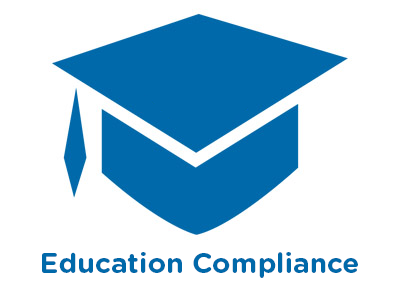 |
GED: Social Studies - Unit 3: Economics |
1.00 |
Welcome to Unit 3: Economics. Economics accounts for about 15% of the questions you'll see on the test. In this unit, we'll cover the basics of both micro and macroeconomics. We'll work with graphs, and we'll explore consumer economics. |
 |
GED: Math - Unit 3: Algebraic Expressions and Equations |
1.00 |
Welcome to Unit 3: Algebraic Expressions and Equations. Many of the problems you'll see on the test will involve algebra. In this unit we'll define the vocabulary of algebra, learn how to simplify expressions, and solve equations. We'll also learn to translate word problems into algebraic expressions that we can solve. |
 |
GED: Reasoning Through Language Arts - Unit 2: Vocabulary and Word Skills |
1.00 |
Welcome to Unit 2: Vocabulary and Word Skills. We learned that reading comprehension is more about understanding the big picture than it is about understanding individual words. Even so, there are strategies for decoding individual words when we bump into ones we don't understand. In this unit, we'll identify and explore some of those strategies. |
 |
GED: Social Studies - Unit 2: United States History |
1.00 |
Welcome to Unit 2: United States History. United States history makes up about 20% of the questions you'll see on the test. They'll cover the time period from exploration and colonization through modern time. In this unit, we'll identify and explore some of those major periods. And while we won't be able to cover every detail, you should have a sense of what happened, and how various events shaped our country. |
 |
GED: Science - Unit 2: Life Science |
1.00 |
Welcome to Unit 2: Life Science. About 45% of the questions you'll see on the science test relate to Life Science. That's the study of living things. In this unit, we'll cover the building blocks of life, the form and function of living things, the basics of heredity, and the ways living things interact with one another and the environment. |
 |
GED: Math - Unit 2: Introduction to Real Numbers |
1.00 |
Welcome to Unit 2: Introduction to Real Numbers. In this unit, we'll identify the kinds of numbers you'll be working with throughout this course and on the test. We'll also learn and practice the basic operations you'll need to be able to perform. |
 |
GED: Math - Unit 1: Tools |
1.00 |
Welcome to Unit 1: Tools. Most of the problems you'll see on the math test are more about problem solving that they are about number crunching. That's why you'll get both a formula sheet and a calculator to use when you take the test. In this unit, we'll look at the formula sheet, and learn about the most commonly used calculator keys. |
 |
GED: Reasoning Through Language Arts - Unit 1: Strategies for Reading Comprehension |
1.00 |
Welcome to Unit 1: Strategies for Reading Comprehension. The Reading and Language Arts (RLA) Test has three sections: reading, editing, and writing. We'll explore some of the strategies and skills related to reading comprehension, and work through practice questions like those you'll see on the test. |
 |
GED: Science - Unit 1: Science Practices |
1.00 |
Welcome to Unit 1: Science Practices. Science practices describe the ways we collect, process, and analyze information. Each question on the science test will incorporate science practice within the content area being tested. In this unit, we'll explore some of those science practices. We'll define scientific method, describe variables, and learn about sampling techniques. We'll also explore some of the ways scientists represent and analyze the data they collect. |
 |
GED: Social Studies - Unit 1: Civics and Government |
1.00 |
Welcome to Unit 1: Civics and Government. Let's start with most heavily tested information. Civics and Government account for about 50% of the questions you'll see on the test. In this unit, we'll define government, ways governments are classified, and learn about the government of the United States. |
 |
Overview of the Americans with Disabilities Act Topic 1: Overview of the ADA (Corrections) |
0.25 |
Welcome to the Overview of the Americans with Disabilities Act, Topic 1: Overview of the ADA. |
 |
Overview of the Americans with Disabilities Act Topic 2: Reasonable Accommodations (Corrections) |
0.25 |
Welcome to the Overview of Americans with Disabilities Act, Topic 2: Reasonable Accommodations. |
 |
Family Educational Rights and Privacy Act (FERPA) for K-12 Institutions |
1.00 |
Welcome to the Family Educational Rights and Privacy Act (FERPA) for K-12 Institutions.
In this course, you will:
Identify what FERPA is.
Explore how educational records can be disclosed, accessed, and amended under FERPA guidelines.
Become familiar with the privacy and accountability goals that FERPA promotes.
Discover the characteristics of personally identifiable information (PII).
Clarify our expectations for enforcing FERPA violations. |
 |
The Dignity for All Students Act (DASA) for Administrators |
1.50 |
Welcome to The Dignity for All Students Act (DASA) course. This course is designed for anyone who works in a school. It is just one of the many K-12 courses we offer. This course will help you develop new knowledge about students and will help you understand how DASA is implemented within schools. |
 |
Welcome to the CypherWorx LCMS - ViaPath |
0.25 |
Welcome to the CypherWorx Learning Content Management System (LCMS). This is an online hub to learn, take courses, and earn certifications. We are excited to have you learn about all that you can do! |
 |
Psychological Trauma in the Context of Aging: Implications for Clinical Practice |
1.00 |
Welcome to the course, Psychological Trauma in the Context of Aging: Implications for Clinical Practice. This course was developed by Barbara Ganzel, PhD, Ithaca College Gerontology Institute and the Finger Lakes Geriatric Education Center. |
 |
Safety and Survival in an Active Shooter Event in School Settings |
0.75 |
Welcome to Safety and Survival in an Active Shooter Event in School Settings. Recent national tragedies in schools remind us that the risk is real: an active shooter incident can happen in any place at any time in any school district. The best way to make sure you are safe is to prepare ahead of time and be ready.
Warning: Some of this content may be disturbing, if you need to take a break, please do so. If you exit and then come back into the course later, it will resume where you left off. |
 |
Instructional Supports and Strategies for Teachers |
2.00 |
Welcome to Instructional Supports and Strategies for Teachers. This course covers the knowledge and skills all teachers need to safely and effectively support students with disabilities. |
 |
High-Leverage Practices for Teachers |
1.25 |
Welcome to High-Leverage Practices for Teachers. This course covers the fundamental components of high-leverage practices and how to implement them in the classroom to support student success. |
 |
High-Leverage Practices for Paraprofessionals |
1.00 |
Welcome to High-Leverage Practices for Paraprofessionals. This course covers the four fundamental components of high-leverage practices and how to implement them in the classroom to support student success. |
 |
Food Allergy Basics: Symptoms and Triggers |
1.00 |
Welcome to Food Allergy Basics: Symptoms and Triggers. This course identifies the symptoms and triggers of food allergies.
Course Learning Objectives:
- Define food allergy.
- Identify the foods that cause 90% of all food allergies.
- List the symptoms of food allergies. |
 |
Food Allergy Basics: Preventing Reactions |
1.00 |
Welcome to Food Allergy Basics: Preventing Reactions. This course is focused on ways to prevent accidental exposure to foods that can cause an allergic reaction.
Course Learning Objectives:
- Describe ways to prevent accidental exposure to foods that cause an allergic reaction.
- Demonstrate how to read a food label to reduce the risk of accidental exposure to foods that can cause an allergic reaction. |
 |
Food Allergy Basics: Emergency Response |
1.00 |
Welcome to Food Allergy Basics: Emergency Response. This course is focused on how to use a Food Allergy and Anaphylaxis Emergency Care Plan to care for a child with a food allergy.
Course Learning Objectives:
- Explain the correct use of the Food Allergy and Anaphylaxis Emergency Care Plan.
- Identify the six rights of medication administration. |
 |
Food Allergy Basics in Early Childhood (CDA 1 and 5) |
3.00 |
Welcome to Food Allergy Basics in Early Childhood. This course is focused on ways to prevent accidental exposure to foods that can cause an allergic reaction. You will be able to describe ways to prevent accidental exposure to foods that cause an allergic reaction. You will also be able to demonstrate how to read a food label to reduce the risk of accidental exposure to foods that can cause an allergic reaction. In addition, you will learn how to use a Food Allergy and Anaphylaxis Emergency Care Plan to care for a child with a food allergy and identify the symptoms and triggers of food allergies. This course is also designed to be part of a Child Development Associate (CDA) Credential™ curriculum. It covers Subject Area 1: Planning a Safe, Healthy Environment to Invite Learning and Subject Area 5: Managing an Effective Program Operation. |
 |
Emergency Animal Recall - Polar Bears |
2.00 |
Welcome to Emergency Animal Recall. This Overview course covers the fundamentals of Emergency Recall training for exhibit animals, including:
What exactly is Emergency Animal Recall, and why is it necessary?
What are the benefits of Emergency Animal Recall?
How do you generate support within your organization for a training program, and how do you decide which animals should be trained first?
What equipment will you need, and what preparations will you need to make?
What is the general outline of an Emergency Recall training program, and how do you maintain the conditioning once it has been established?
This is the first course in a series. After completing this Overview, you should continue with the species-specific Polar Bear Emergency Animal Recall course. |


























